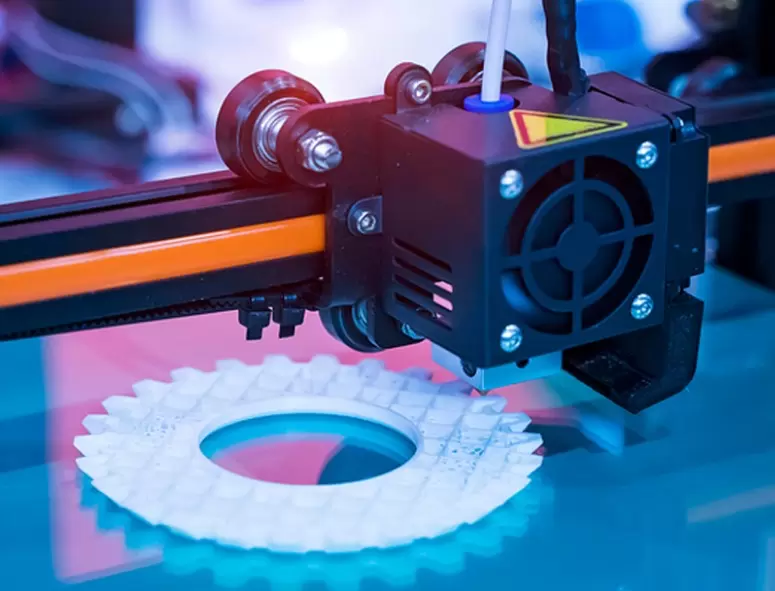Fused Deposition Modeling (FDM) is a foundational process in additive manufacturing that has become a key driver of innovation in product design, prototyping, and production. This article explores the many applications and advantages of the FDM process in additive manufacturing. We’ll examine the steps of the FDM process, the materials used, and real-world examples of FDM applications in various industries.
Table of Content:
- Introduction: FDM Process in Additive Manufacturing
- What is FDM Process in 3D Printing?
- Steps in the FDM Process
- FDM in Product Design
- Materials Used in FDM Process
- Application of FDM Process
- Advantages of FDM in Additive Manufacturing
- FDM in Rapid Prototyping
- Examples of FDM Applications
- Conclusion: FDM Process in Additive Manufacturing Driving Industry Advancements
Introduction: FDM Process in Additive Manufacturing
Fused Deposition Modeling (FDM) is a designed approach that uses a thermoplastic material to build a three-dimensional object by layer-by-layer deposition. The FDM process is a widely implemented technique in additive manufacturing due to its high-speed, low-cost, and precise 3D printing process. This comprehensive guide will outline the fundamental aspects of FDM technology, including its role in product design, material selection, and real-world applications.
What is FDM Process in 3D Printing?
Fused Deposition Modelling (FDM) is a 3D printing process that uses a thermoplastic filament material to print layers of molten materials for the creation of 3D objects. The process begins with a computer-aided design (CAD) model, which is then sliced by a software program. The printer then takes the sliced pattern and, layer by layer, melts and deposits the filament, thereby creating a physical object.
Steps in the FDM Process
The FDM 3D printing process involves the following steps:
i. Creation of a 3D Model: The process begins with the creation of a 3D model using computer-aided design (CAD) software.
ii. Slicing: The 3D model is sliced into 2D cross-sections using specialized software.
iii. Preparation of Printing Surface: The printing surface is prepared with a material capable of adhering to the filament during printing.
iv. Printing: The printing begins once the printer has been accurately set up and the filament has been loaded.
FDM in Product Design
FDM helps to streamline the product design process by allowing designers to create and print prototypes quickly and inexpensively. This approach enables designers to have an iterative process in ensuring that final product design meets the design specifications desired.
Materials Used in FDM Process
Several materials can be used in the FDM process which can range from standard materials like PLA to high-performance engineering thermoplastics like PEEK. FDM filaments can range in diameter from 1.75 to 2.85 millimeters, depending on the printer model and manufacturer. The selection of the appropriate filament depends on the desired properties of the finished product.
Application of FDM Process
The use of FDM technology has revolutionized a variety of industries. In architecture, FDM has been instrumental in modelling the construction of 3D building models in different variations. It has also aided the gaming industry by creating miniature models of characters for gaming theatres, facilitating quick production on a scalable level, and enabling customization cost-effectively.
Advantages of FDM in Additive Manufacturing
FDM is an extremely flexible process that can be used to create a wide range of objects of different shapes, sizes, and geometries. Other advantages of FDM include lower production cost, reduced production time, ability to produce custom objects, simplicity of operation, and the capacity to use a wide range of materials to meet specific design requirements.
FDM in Rapid Prototyping
Rapid prototyping is the use of 3D printing technology to build prototypes for a product. Rapid prototyping through FDM technology enables easy construction of movable prototypes with durable and lasting features, which ensures that the final product meets the desired specifications.
Examples of FDM Applications
Some of the most significant commercial applications of the FDM process include the production of prosthetic limbs, eyeglass frames, automotive components, and rapid prototyping, among others. The use of FDM is also central to research work in medicine, automotive, aerospace, and the military industries.
Conclusion: FDM Process in Additive Manufacturing Driving Industry Advancements
Fused Deposition Modelling (FDM) technology is a critical process in additive manufacturing. It has introduced flexibility, speed, and cost reduction to the production process in various industries. There are multiple manufacturer-specific features used with FDM technology, allowing machines to facilitate quicker and highly accurate




